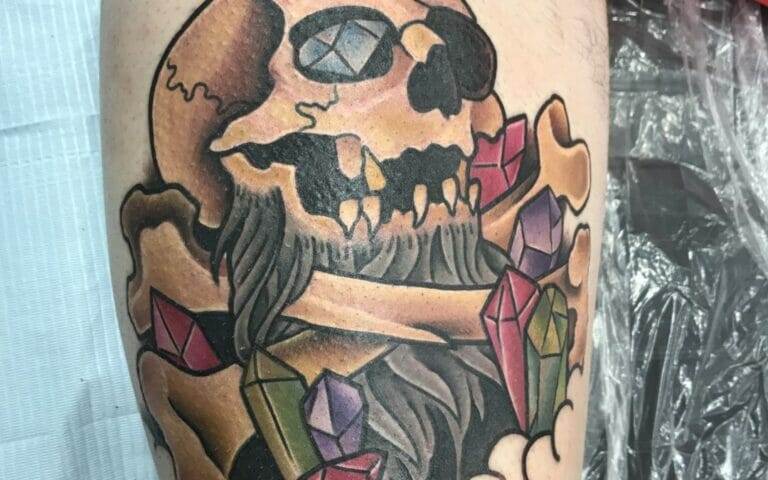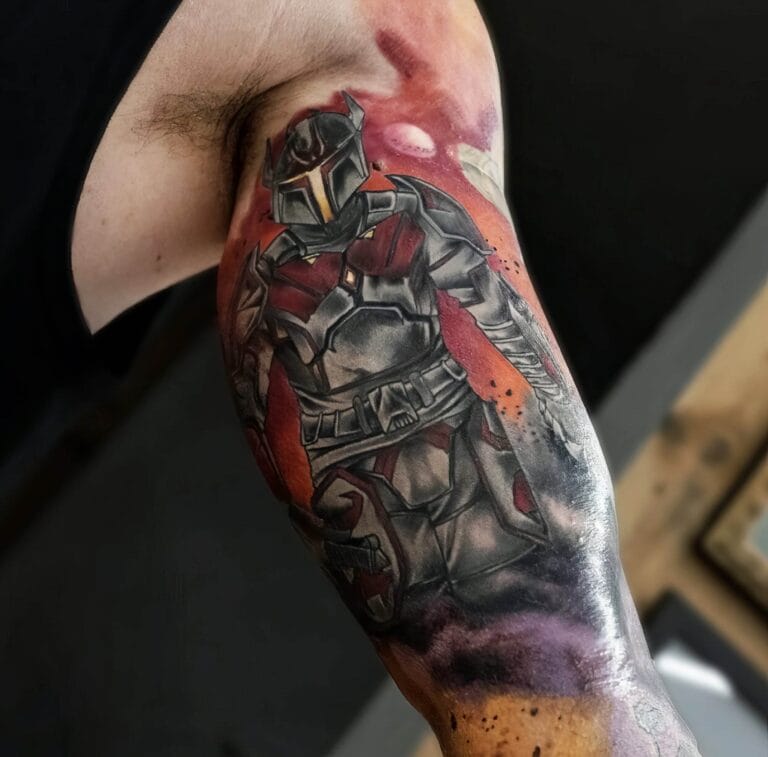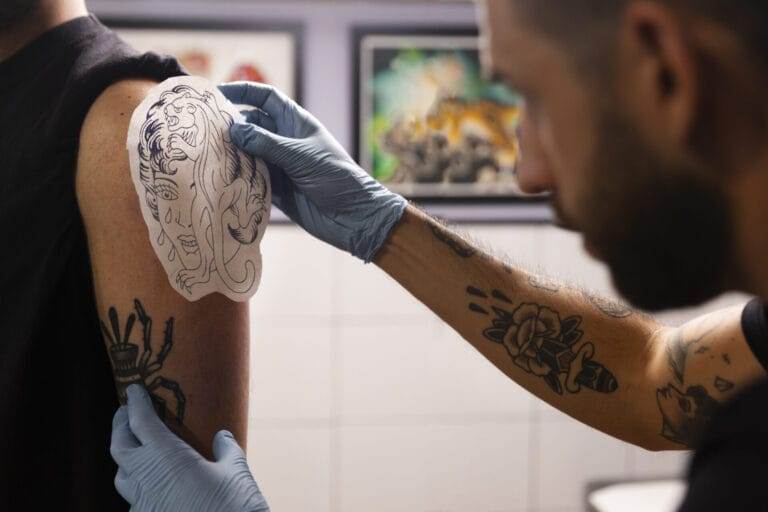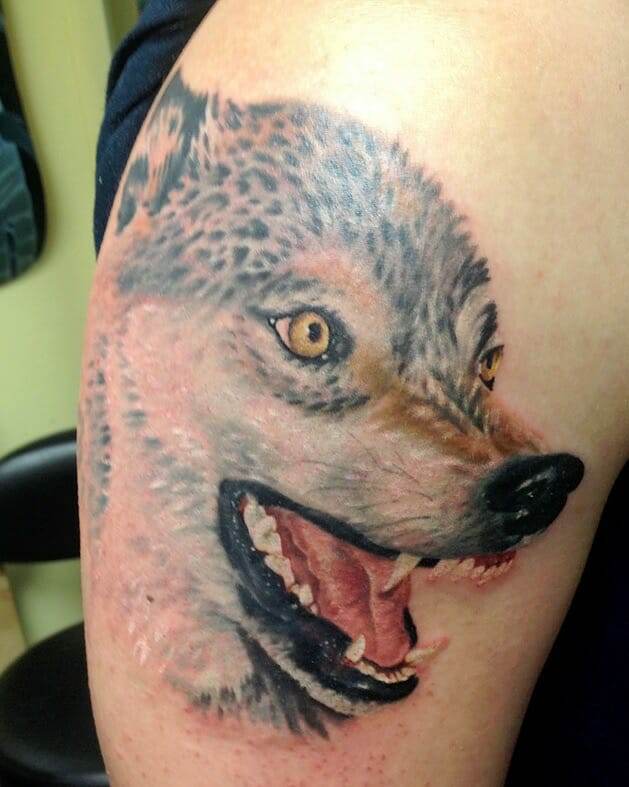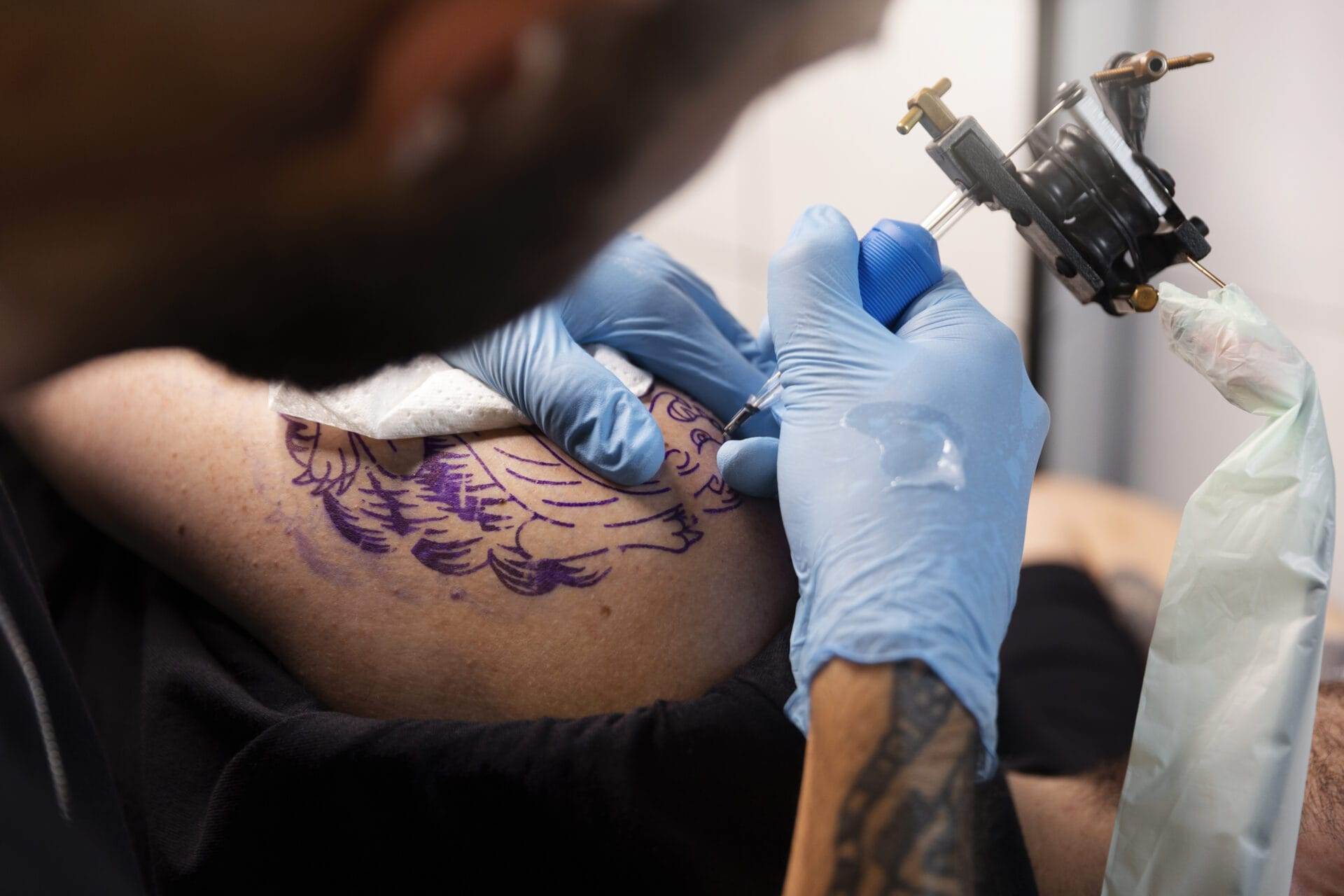
Introduction
In the world of body art, tattoos hold a unique significance for many individuals. Whether they serve as a personal emblem, a tribute, or simply a reflection of one’s style, deciding to get a tattoo is an important step that requires careful consideration.
The Significance of Tattoos
Tattoos are more than just ink on skin; they represent a connection to one’s identity and beliefs. Engaging in the tattoo process involves various stages, from conceptualizing an idea to finding the right artist. Each phase plays a crucial role in ensuring the experience is not only satisfying but also meaningful.
- Researching: Ensuring you select an artist whose expertise matches your vision.
- Designing: Collaborating on a design that resonates with your values and aesthetic preferences.
- Aftercare: Understanding the steps necessary to maintain the integrity of your tattoo post-application.
Why This Guide is Important
With numerous options available, making an informed decision can often feel overwhelming. This guide aims to simplify the process, offering insights into essential aspects to consider as you embark on your tattoo journey. By following the outlined steps, individuals are empowered to choose designs they will cherish for a lifetime.
Understanding Your Vision
As individuals embark on their tattoo journey, the first and perhaps most crucial step is understanding one’s vision for the tattoo. This involves more than just picking a random image; it requires introspection and clarity.
The Importance of Personal Reflection
Taking the time to reflect on what the tattoo symbolizes to you can significantly enhance the process. Questions to consider include:
- What feelings or memories do I want to capture?
- Is there a story behind my choice?
- How will this design represent my identity?
Understanding these elements helps frame your vision and leads to more meaningful outcomes.
Visual Inspiration and Concept Development
Once there’s clarity in your thoughts, the next step is to gather visual inspirations. Creating a mood board can serve as a helpful tool. This might include:
- Images of tattoos that resonate with you
- Art styles that appeal to your aesthetic
- Color schemes that represent your personality
Utilizing platforms like Pinterest or Instagram can provide a plethora of ideas, making it easier to pinpoint what truly speaks to you. By investing energy into understanding your vision, you lay a solid foundation for a tattoo that you’ll cherish for years to come.
Researching Tattoo Artists
With a clear vision in mind, the next critical step is researching tattoo artists who can bring that vision to life. Selecting the right artist is vital in ensuring that your ink not only captures your concept but also aligns with your stylistic preferences.
Online Portfolios
One of the best places to start is by exploring online portfolios. Most reputable tattoo artists display their work through various digital platforms, allowing prospective clients to assess their style and skill. Here’s what to look for in an online portfolio:
- Consistency: Artists should have a cohesive stylistic approach in their work.
- Diverse Designs: A broad range of styles showcased indicates versatility.
- Quality of Work: Look for clean lines, vibrant colors, and well-executed designs.
Additionally, visiting an artist’s social media profiles can provide insight into their latest work and client interactions.
Client Reviews
Client reviews can offer an invaluable perspective on an artist’s professionalism and reliability. Consider checking:
- Rating Platforms: Websites that specialize in reviews can provide overall ratings.
- Social Media Testimonials: Direct feedback from clients on various platforms can reveal the artist’s strengths.
- Word of Mouth: Asking friends or acquaintances about their experiences can lead to trusted recommendations.
By conducting thorough research on both portfolios and reviews, individuals can confidently narrow down their options and select an artist who aligns with their needs.
Meeting Tattoo Artists in Person
After narrowing down potential tattoo artists through online research, the next essential step is meeting them in person. This provides an opportunity to gauge compatibility and ensure that your vision aligns with their expertise.

Consultation Process
The consultation process is a crucial phase that allows for a two-way dialogue between you and the artist. During this meeting, you should:
- Discuss Your Ideas: Clearly articulate your vision, including any design elements or specific styles you have in mind.
- Ask Questions: Inquire about the artist’s experience, techniques, and how they approach the design process. Questions like “What’s your tattooing style?” or “Have you worked on similar designs?” can provide clarity.
- Gauge Their Understanding: A good artist will take the time to listen and offer insights or suggestions based on your concept.
This interaction not only helps in refining your design but also establishes a rapport, which is vital for a comfortable tattooing experience.
Examining Tattoo Studio
Visiting the tattoo studio itself is equally important. Take a moment to assess:
- Hygiene Standards: Check for cleanliness and sterilization protocols; a reputable studio should adhere to strict safety practices.
- Atmosphere: A welcoming and professional environment can enhance your comfort level.
- Portfolio Display: Review any artwork showcased in the studio to further evaluate the artist’s skill and style.
By engaging in both the consultation and studio assessment, individuals can ensure they are making a well-informed decision about their tattoo experience.
Evaluating Tattoo Artist’s Style
After meeting potential tattoo artists and examining the studio environment, it’s time to delve into a critical aspect of the decision-making process: evaluating the artist’s style. This step is fundamental in ensuring that your envisioned tattoo aligns with the artist’s expertise.
Recognizing Different Tattoo Styles
Tattoo artistry encompasses a wide variety of styles, each with its own unique characteristics. Familiarizing yourself with these styles will help you select an artist who specializes in what’s important to you. Here are some popular tattoo styles to consider:
- Traditional: Known for bold lines and bright colors, often with iconic imagery.
- Realism: Focuses on lifelike representations, which can be intricate and detailed.
- Watercolor: Features vibrant colors and free-flowing designs that mimic watercolor paintings.
- Geometric: Involves clean lines and shapes to create stunning patterns or abstract designs.
Assessing Compatibility
Once you have an understanding of different styles, assess how the artist’s portfolio reflects their specialization. Look for:
- Previous Work: Does their portfolio contain designs similar to what you’re considering?
- Attention to Detail: Examine the intricacy of their work; fine details can differentiate good tattoos from great ones.
- Client Satisfaction: Review testimonials specifically discussing the style and execution of the tattoo.
Evaluating an artist’s style ensures that the tattoo not only meets your aesthetic expectations but also delights you for years to come. By aligning your vision with the right artistic expertise, you can achieve a tattoo that is both beautiful and meaningful.
Discussing Design Ideas
Having identified an artist whose style resonates with your vision, it’s time to engage in a deep dive into the design ideas for your tattoo. This collaborative process is essential for manifesting your concept into a tangible piece of art.
Collaborative Brainstorming
Start the discussion by sharing the underlying meaning or symbolism behind your tattoo idea. Whether it’s a personal story, a cherished memory, or simply an image that resonates with you, articulating this background allows the artist to grasp the essence of what you want. During this brainstorming session, consider the following tips:
- Be Open-Minded: While it’s important to communicate your vision, being receptive to the artist’s suggestions can lead to a better outcome.
- Use Visual References: Bring along images, color palettes, or styles that inspire you. They can serve as excellent conversation starters.
- Sketch Ideas: If possible, sketching a rough idea can help convey your thoughts visually, even if you’re not an artist.
Refining the Concept
As you discuss, the tattoo artist may provide insights on how to refine your concept, suggesting modifications that enhance the design’s flow or placement. This dialogue can help transform a basic idea into a unique, personalized tattoo. By investing time in this discussion, both you and your artist can collaboratively create a design that reflects your vision, ensuring it is a true representation of your identity.
Deciding on Tattoo Placement
With the design ideas in place and collaboratively refined with your artist, the next significant decision revolves around where to place the tattoo on your body. Tattoo placement can influence not only the visibility of the artwork but also the overall experience of getting tattooed.
Importance of Placement
Choosing the right location can enhance the significance of the tattoo and ensure its durability over time. Here are some key considerations when deciding on placement:
- Visibility vs. Privacy: Do you want your tattoo showcased for public viewing or kept more private? For instance, a wrist tattoo is easily visible, whereas an inner arm or thigh tattoo might be more discreet.
- Pain Tolerance: Certain areas of the body are known to be more sensitive than others. Regions like the ribs, spine, and ankles can be particularly painful, while fleshy areas like the upper arm or thigh tend to have more cushion.
- Lifestyle Considerations: If your job or lifestyle necessitates frequent exposure to the sun or requires covering up tattoos, consider locations that can be easily concealed or protected.
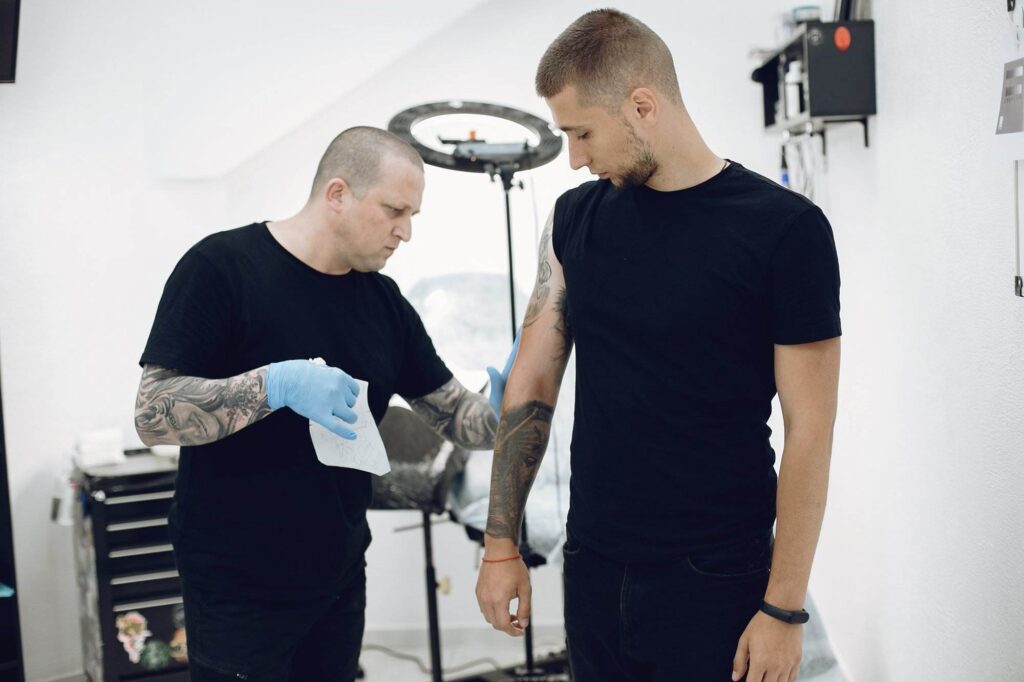
Consulting with Your Artist
Your artist can offer invaluable advice on placement based on their experience. They may suggest the best area for the size and complexity of your design, ensuring that the artwork not only fits well but also looks great as part of your overall body landscape. By thoughtfully considering placement, you can ensure your tattoo is not only a reflection of your identity but also a well-integrated part of your personal expression.
Understanding Tattoo Aftercare
After successfully navigating the design and placement phases, you are finally at the exciting moment of getting your tattoo. However, the journey doesn’t end there. Proper tattoo aftercare is crucial in ensuring that your new artwork heals beautifully and maintains its vibrancy over time.
Why Aftercare Matters
Immediate and long-term aftercare practices can significantly affect how your tattoo looks and feels after the healing process. Neglecting this important phase can lead to issues such as fading, infection, or unsatisfactory healing. Key components of aftercare include:
- Keeping it Clean: Gently wash the tattoo with mild soap and lukewarm water to remove any blood or ink. Avoid scrubbing, as the skin will be sensitive.
- Moisturizing: Applying a thin layer of fragrance-free lotion or a recommended tattoo ointment helps keep the skin hydrated and promotes healing.
- Avoiding Sun Exposure: Protect your tattoo from direct sunlight to prevent fading. If unavoidable, consider using a higher SPF sunscreen once the tattoo has healed.
Monitoring Healing Progress
Throughout the healing process, monitor your tattoo for signs of infection or excessive irritation. If you notice unusual swelling, redness, or discharge, it’s important to consult your artist or a healthcare professional. Proper aftercare not only preserves the quality of your tattoo but also enhances your overall experience, allowing you to enjoy your new art without worries. By following aftercare guidelines diligently, you can ensure your tattoo remains a stunning reflection of your identity for years to come.
Finalizing Your Decision
Having gone through the extensive process of researching artists, discussing design ideas, deciding on placement, and understanding aftercare, you are now nearing the finish line—finalizing your decision. This is a pivotal moment that requires thoughtful reflection.
Reflect on Your Choices
Before making that final commitment, take time to assess all the information gathered throughout the process. Consider aspects such as:
- Artistic Compatibility: Does the artist’s style truly resonate with your vision?
- Placement Confidence: Are you comfortable with the chosen location of the tattoo?
- Aftercare Understanding: Do you feel prepared to take care of your new tattoo properly?
Jotting down your thoughts or discussing them with a trusted friend can further clarify your readiness.
Establishing a Trusting Relationship with Your Artist
Reach out to your chosen artist to confirm your design, placement, and any last-minute adjustments. This conversation solidifies your collaboration and ensures both parties are aligned. Trusting your artist can alleviate any last-minute nerves, allowing you to approach your tattoo appointment with excitement rather than anxiety. Ultimately, finalizing your decision marks the culmination of your preparations. By carefully considering all factors and maintaining clear communication with your artist, you can embark on this exciting new journey with confidence, eagerly anticipating the art you will carry for a lifetime.
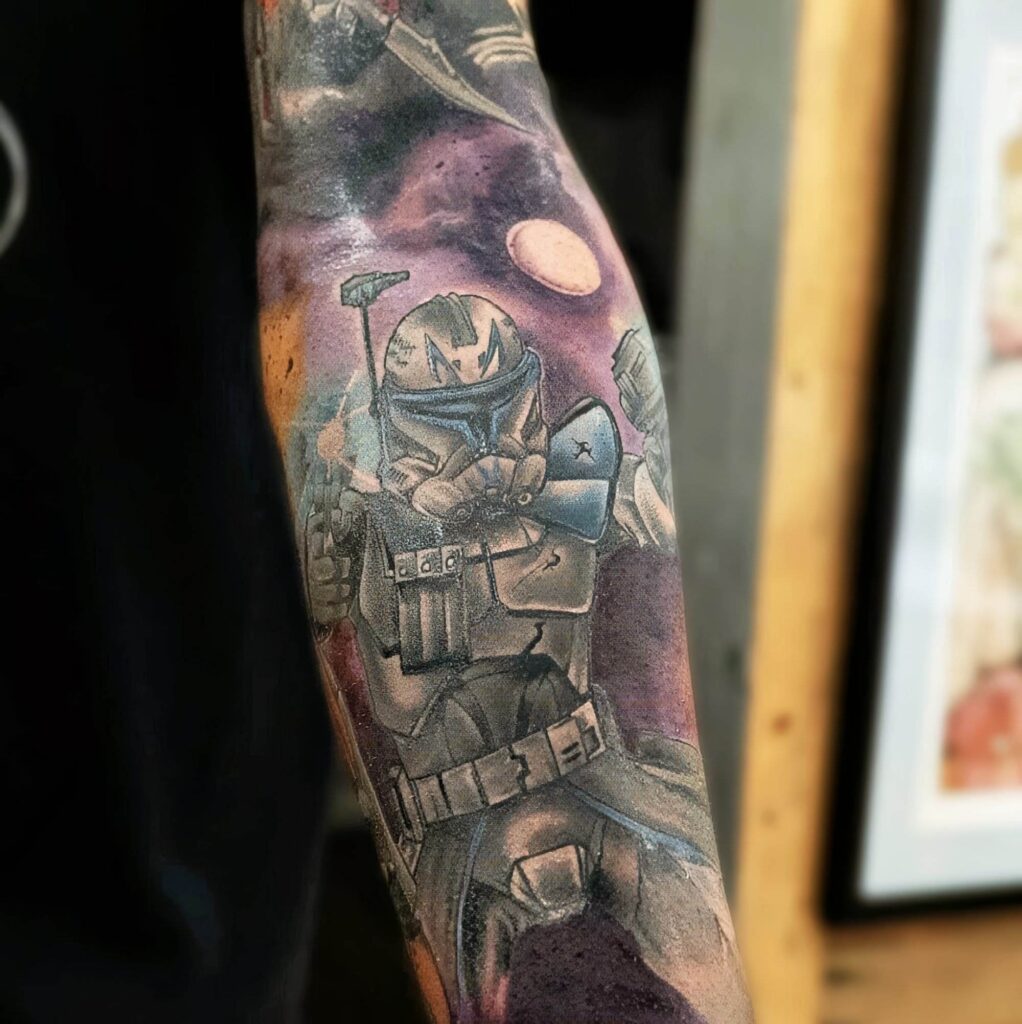
Conclusion
As you approach the end of this insightful journey toward getting your tattoo, it’s crucial to reflect on the key steps you’ve taken. From understanding your vision to finalizing your decision, each phase is instrumental in ensuring a successful and satisfying tattoo experience.
Recap of Key Steps
Throughout this process, several pivotal factors were emphasized:
- Understanding Your Vision: Gaining clarity on what your tattoo represents and why it matters to you.
- Researching Tattoo Artists: Finding the right artist through online portfolios and client reviews to ensure compatibility.
- Consulting and Collaborating: Engaging in meaningful discussions about design and placement, creating a partnership with your artist.
- Prioritizing Aftercare: Recognizing that proper aftercare is essential for maintaining the integrity of your tattoo.
The Journey Ahead
Now armed with knowledge and a well-thought-out plan, you’re ready to embark on this exciting new chapter. A tattoo is not just a decorative art form; it’s a representation of your identity, experiences, and values. Embrace this journey with confidence, knowing that you’ve taken the necessary steps to ensure your tattoo will be a source of pride and joy for years to come. As you wear your new artwork, let it serve as a constant reminder of the careful thought and creativity that went into making it uniquely yours.

